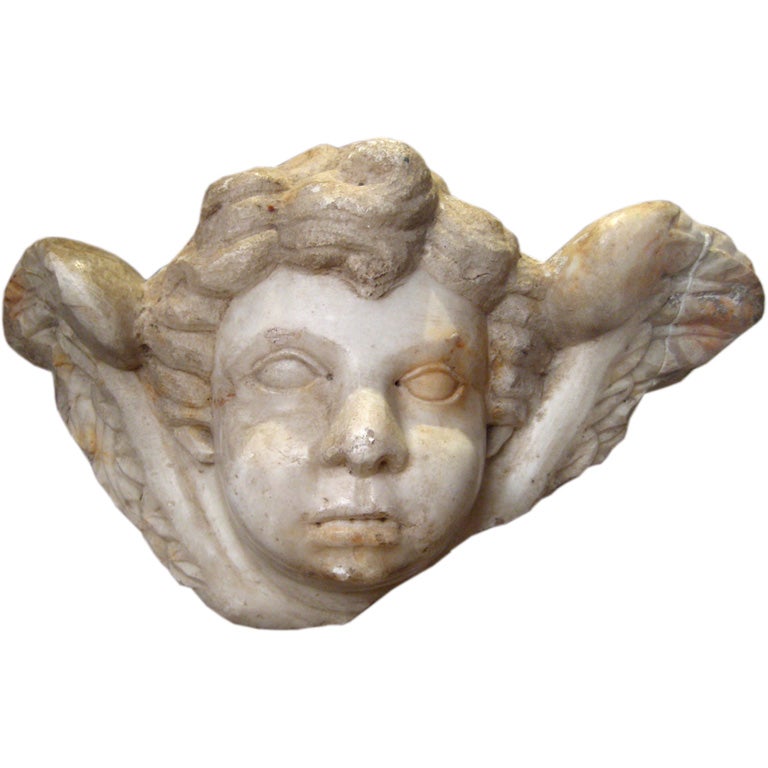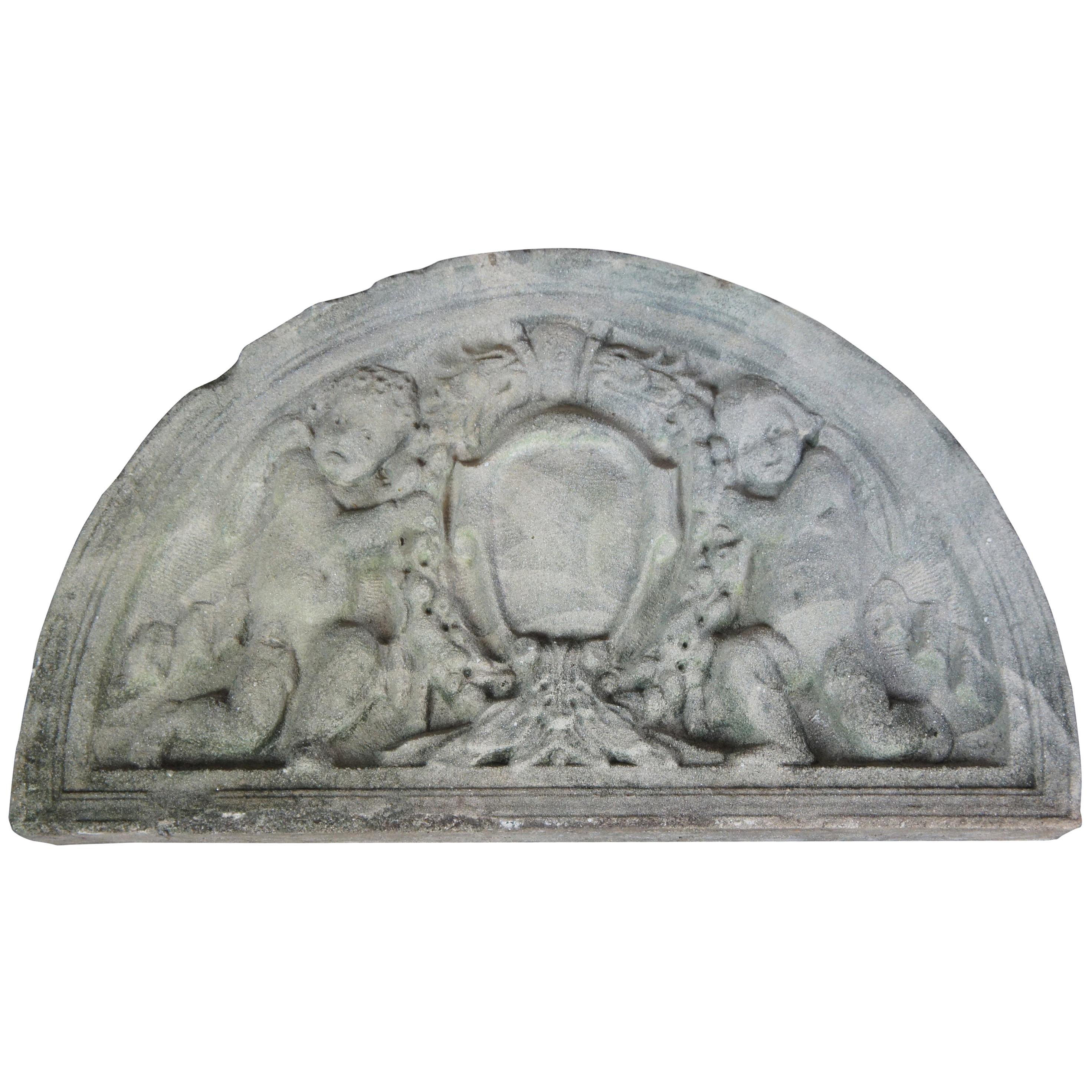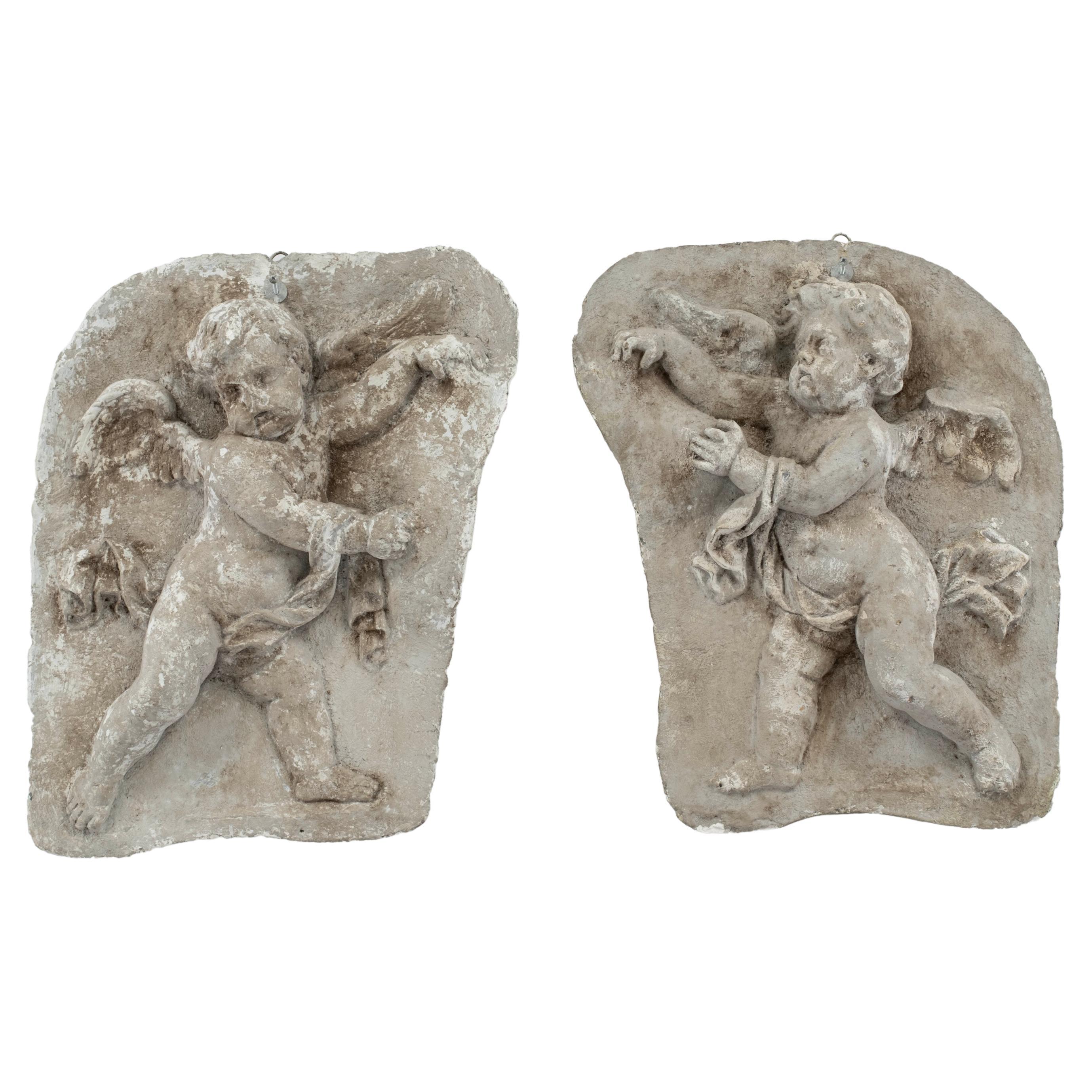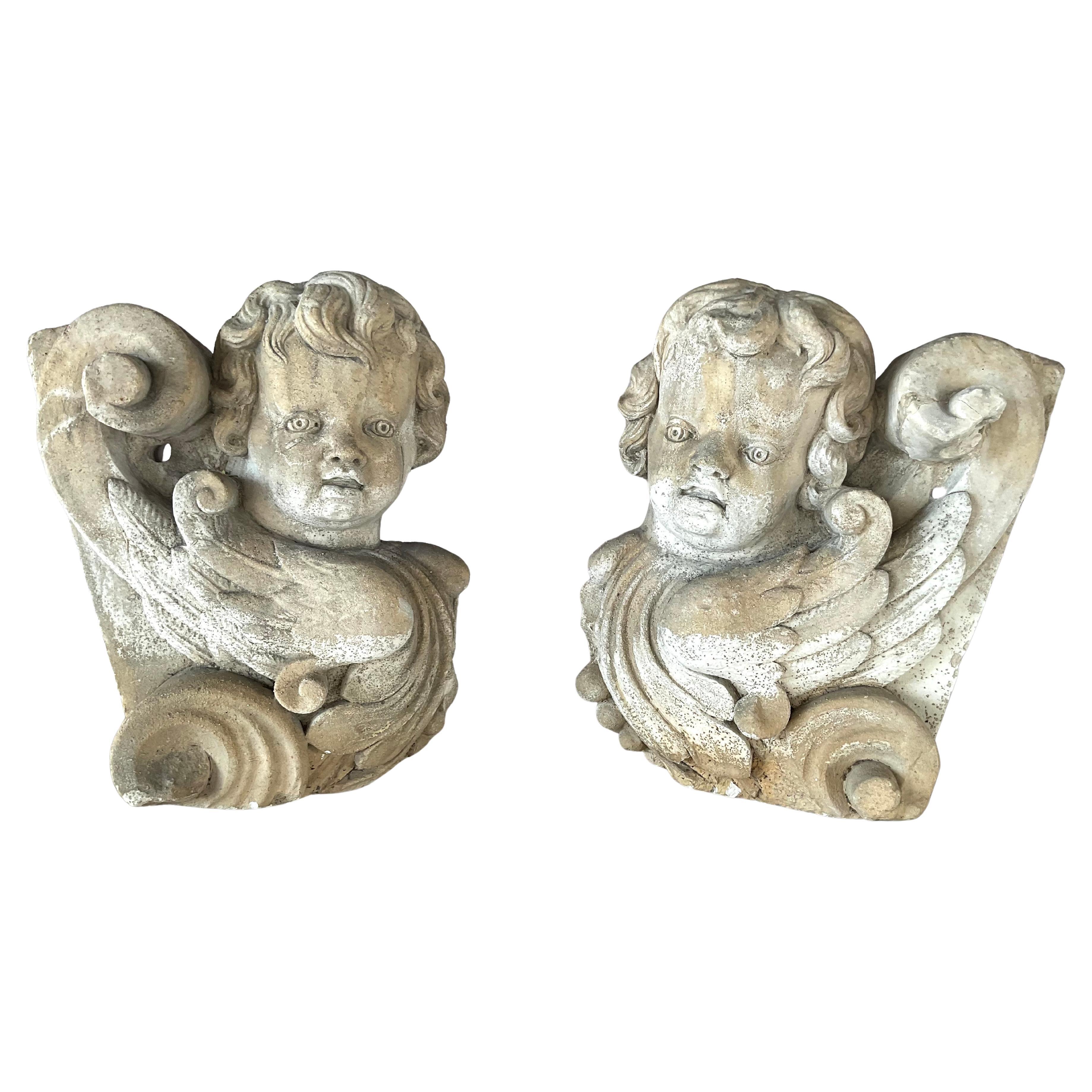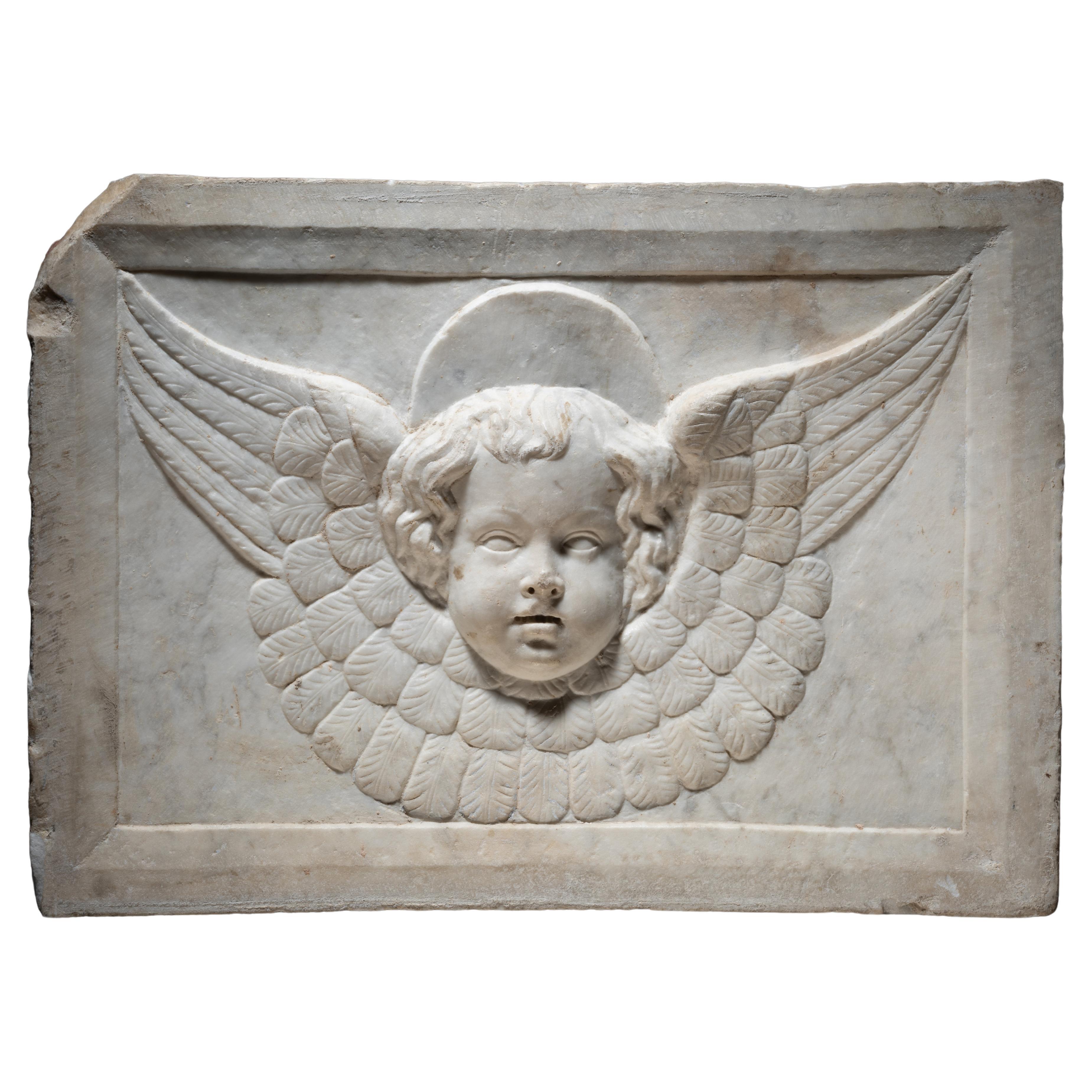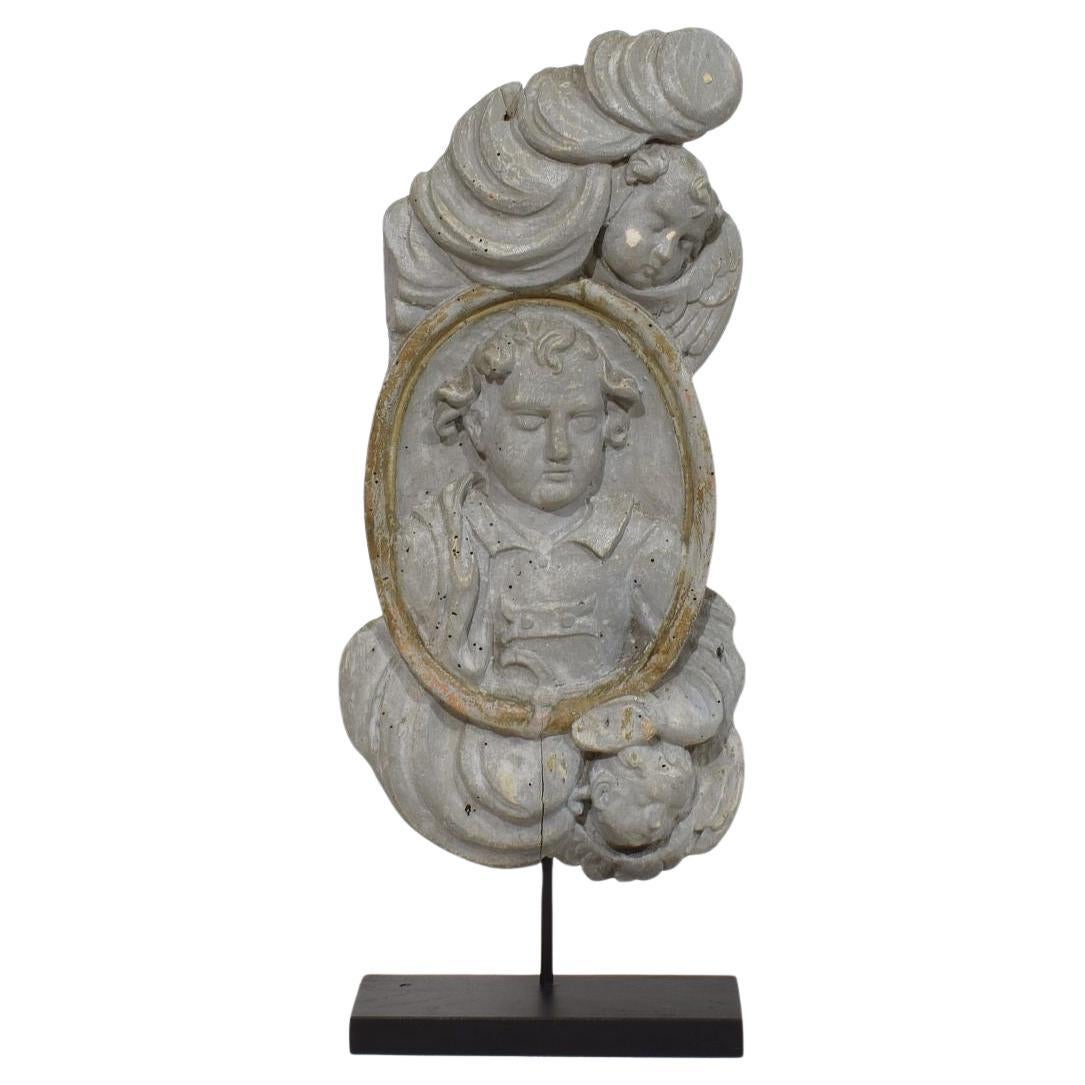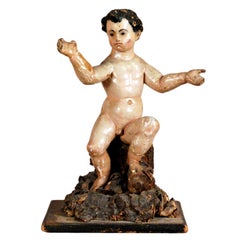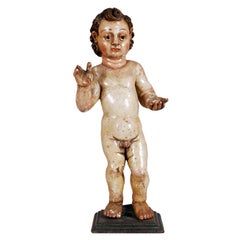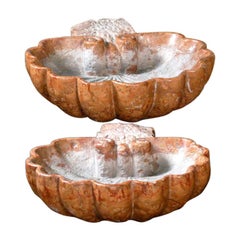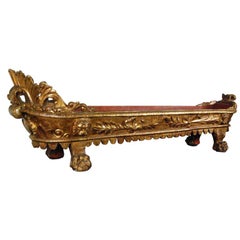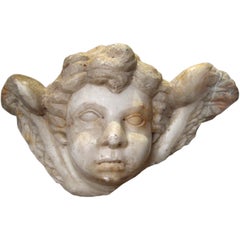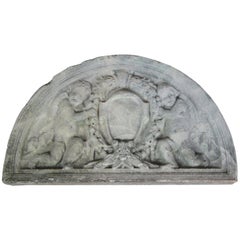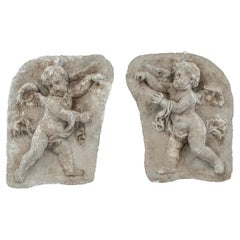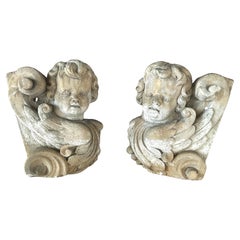Items Similar to A Rare French Marble Relief of Putti Fragment, Late 17th Century
Want more images or videos?
Request additional images or videos from the seller
1 of 7
A Rare French Marble Relief of Putti Fragment, Late 17th Century
$9,800
£7,395.79
€8,467.06
CA$13,821.25
A$15,174.01
CHF 7,916.31
MX$183,626.62
NOK 99,218.69
SEK 93,490.09
DKK 63,204.36
About the Item
A Rare French Marble Relief of PuttiFragment
Late 17th Century Century
Height 14 in. Width 33 in.
Carved throughtout with three putti figures
Provenance:
Private Collector, Bordeaux, France
Arc INV. 3
- Dimensions:Height: 14 in (35.56 cm)Width: 33 in (83.82 cm)Depth: 3 in (7.62 cm)
- Style:Baroque (Of the Period)
- Materials and Techniques:
- Place of Origin:
- Period:
- Date of Manufacture:17th Century
- Condition:Wear consistent with age and use. in need of cleaning.
- Seller Location:Sheffield, MA
- Reference Number:Seller: Arc31stDibs: LU8339749294
About the Seller
4.8
Vetted Professional Seller
Every seller passes strict standards for authenticity and reliability
Established in 1980
1stDibs seller since 2017
50 sales on 1stDibs
Typical response time: 6 hours
- ShippingRetrieving quote...Shipping from: Sheffield, MA
- Return Policy
Authenticity Guarantee
In the unlikely event there’s an issue with an item’s authenticity, contact us within 1 year for a full refund. DetailsMoney-Back Guarantee
If your item is not as described, is damaged in transit, or does not arrive, contact us within 7 days for a full refund. Details24-Hour Cancellation
You have a 24-hour grace period in which to reconsider your purchase, with no questions asked.Vetted Professional Sellers
Our world-class sellers must adhere to strict standards for service and quality, maintaining the integrity of our listings.Price-Match Guarantee
If you find that a seller listed the same item for a lower price elsewhere, we’ll match it.Trusted Global Delivery
Our best-in-class carrier network provides specialized shipping options worldwide, including custom delivery.More From This Seller
View AllAn Italian Carved Polychrome Figure of a Putto Sitting on a Rock
Located in Sheffield, MA
Provenance: Provenance: Private Collection Paris
Category
Antique 18th Century and Earlier Italian Statues
An Italian Carved Polychromed Figure of a Putto
Located in Sheffield, MA
Provenance: Private Collection Paris
Category
Antique 18th Century and Earlier Italian Sculptures
A Fine Pair of Italian Marble Shell Form Architectural Elements
Located in Sheffield, MA
Each with wonderful patina
Category
Antique 19th Century Architectural Elements
Materials
Marble
$6,080 Sale Price / set
28% Off
A Rare Baroque Giltwood Presentoire Rome, Italy
Located in Sheffield, MA
Finely decorated throughout
Category
Antique 18th Century and Earlier Italian Centerpieces
A Rare Pair of Neapolitan Papier Mache Figures on Plinths
Located in Sheffield, MA
Each figure is painted and gilded, and each resting on painted and polychromed plinths
Category
Antique 18th Century and Earlier Italian Sculptures
An Unusual Continental Carved Wall Bracket
Located in Sheffield, MA
Carved with figures, foliage and scrolls
Category
Antique 18th Century and Earlier Wall Brackets
You May Also Like
18th c., Marble Cherub Fragment
Located in Los Angeles, CA
Hand-carved, Northern Italian, winged, marble cherub's head mounted on a custom, Lucite base.
Category
Antique 18th Century Italian Statues
Materials
Marble
$5,580 Sale Price
40% Off
Concrete Demilune Sculptural Cherub Angel Garden Plaque Pediment
Located in Dayton, OH
20th century demilune shaped sculptural wall pediment. Features figural cherubs or angels holding onto a wreath. Very heavy. Original mounting brackets o...
Category
20th Century Victorian Architectural Elements
Materials
Concrete
$960 Sale Price
20% Off
19th Century Architectural Detail of Putti
Located in Houston, TX
A pair of Italian architectural putti facing each other. Beautiful detail.
Category
Antique 19th Century Italian Wall-mounted Sculptures
Materials
Cement
Hand-Carved Italian Stone Cherub Corbels, A Pair
Located in Bradenton, FL
18th Century Italian figural carved stone corbels featuring cherubs, or putti heads, with delicately rendered wings, volutes, and scrolling acanthus motifs. Heavy stone is hand-carve...
Category
Antique 18th Century Italian Baroque Architectural Elements
Materials
Stone
Cercle of Jacopo della Pila - Marble relief depicting a winged Cherub
Located in Bruxelles, BE
Cercle of Jacopo della Pila (Lombard, in Naples 1471-1502)
Marble relief depicting a winged Cherub
Naples, second half of15th century
40 x 57 x 12 cm
Exquisitely carved, this relief portrays a winged cherub with cascading hair and delicate features. The cherub's plump, smooth countenance, rounded cheeks, outlined lips, and finely drawn nose emanate a sense of tenderness. The quadrangular module, is adorned with a carved frame. The relief ascends gradually, transitioning from the low relief of the wings to the high relief of the head.
The rectangular frame and the subtly curved form of the artwork suggest that the relief likely adorned the upper part of an arch or a vaulted chapel. The type is that of the perspective room with a coffered ceiling decorated with figures of winged cherubs, which is found in various Neapolitan chapels of the 15th century. Coffered ceilings attest to the recovery of antiquity and the search for luxury in Renaissance architecture, first in Florence, then in Rome and Naples. The majority of the numerous family chapels and tombs built during the late fifteenth century in south of Italy employ the new formal vocabulary of the Florentine Renaissance in a self-confident manner that permitted a broad spectrum of variations.
The escalating admiration for the classical world, coupled with the development of perspective, significantly contributed to the Renaissance endorsement of coffered ceilings. This artistic and constructive device drew inspiration from the intricate marble patterns observed in historical landmarks such as the Arch of Titus, the Temple of Vesta in Tivoli, the Pantheon, and the Basilica of Maxentius. A distilled product of both mathematical and artistic cultures, deeply scrutinizing the ancient world, the coffered ceiling plays a vital role in the perspective construction of space with its regular and directional geometry. The motif of the coffered ceiling decorated with cherubs in relief was introduced in Naples by Francesco Laurana in the plastic decoration of the Arch of Castelnuovo. Laurana's impact on the art scene in the south of Italy was profound. The introduction of the winged cherub into the region's artistic vocabulary bridged the gap between the classical and the contemporary, creating a synthesis that resonated with both aesthetic and spiritual sensibilities. His influence extended beyond the immediate visual appeal, shaping the cultural identity of the Renaissance in southern Italy. Although the plastic decoration of the Arch of Castelnuovo cannot certainly be ascribed to a mature Renaissance style, it was precisely on this occasion that the sculptors who worked there could get to know and export throughout the Italian peninsula that type of "Florentine classicism" which, even in the 15th century Naples, was conditioned by the Burgundian culture imported into the Kingdom by Alfonso of Aragon himself, with artists called from Spain and Northern Europe. The coffered ceiling, with its geometric patterns and Laurana's winged cherubs nestled within, became a symbol of refinement and cultural sophistication. The relief sculptures, carefully integrated into the overall design, transformed the ceiling into a celestial realm, inviting viewers to contemplate the divine while immersed in the grandeur of the Renaissance space.
Similar winged cherubs appears also in the Naples cathedral. Within the renowned Succorpo Chapel, a mesmerizing marble coffered ceiling adorned with cherubs epitomizes the splendor of the Neapolitan Renaissance. The interplay of light and shadow on the textured surface of the marble coffered ceiling introduces an ethereal dimension, providing an immersive visual experience for observers. The geometric precision and the repeated patterns, reminiscent of classical motifs, establish a sense of harmony and balance that has become the hallmark of the Neapolitan interpretation of Florentine Renaissance aesthetics.
Although probably intended to be admired from a distance, this cherub is intricately detailed and exquisitely rendered: the face and hair are elegantly outlined and the feathers are textured through juxtaposed lines. The marble, both figurative and decorative, adheres to the principles of balance and restrained ornamentation typical of the « Florentine Classicism ». Harmonious shapes and gracefully orchestrated curves , rooted in the classical repertoire, converge to evoke a sense of ethereal beauty. The surface displays the masterful use of a chisel to intricately carve the feathers and facial features, creating an almost abstract quality.
This work is a testament to a sculptor of great skill and rich figurative knowledge, seamlessly blending classical firmness in contours with a refined treatment of the marble's surface. The combination of tradition and innovation point to a stylistic idiom from Lombardy, in particular we can find some comparaisons with the works of Jacopo della Pila, sculptor of Lombard origin working in Naples in the second half of the 15th century. He is documented there between 1471 and 1502, and is a protagonist of the Aragon Renaissance in the second half of the Quattrocento, together with the other great Northern sculptor active in the kingdom, Domenico Gagini.
the first commission he received dates back to August 9, 1471, when Jacopo publicly committed to sculpting the funerary monument of Archbishop Nicola Piscicelli to be placed in the Cathedral of Salerno. The last known work is an altar ordered on July 29, 1502, by the noble Jacopo Rocco for the church of San Lorenzo Maggiore in Naples. Between these two chronological extremes (1471-1502), we must place the fervent activity of the artist, who had trained in Rome, perhaps under the guidance of Paolo Romano but also engaged in dialogue with other major artists of the city, especially Isaia da Pisa. He enriched his experience in Naples, initially drawing inspiration from the works of Domenico Gagini and later from the Tuscan masterpieces of Antonio Rossellino and Benedetto da Maiano destined for the church of Santa Maria di Monteoliveto. Jacopo della Pila's artistic personality is thus based on a complex interplay of influences, contributing to the definition of a highly personal style.
Close comparaison can be made between our cherub and the winged angels reliefs...
Category
Antique 15th Century and Earlier Italian Renaissance Figurative Sculptures
Materials
Marble
$23,120 Sale Price
20% Off
French 17/ 18th Century Carved Wooden Baroque Panel Depicting A Saint And Angels
Located in Buisson, FR
Unique panel depicting a Saint figure and Angels. Wonderful layers of its original color,
France, circa 1650-1750 . Weathered, small losses.
Treated against woodworm.
Measurements in...
Category
Antique 17th Century French Baroque Figurative Sculptures
Materials
Wood
